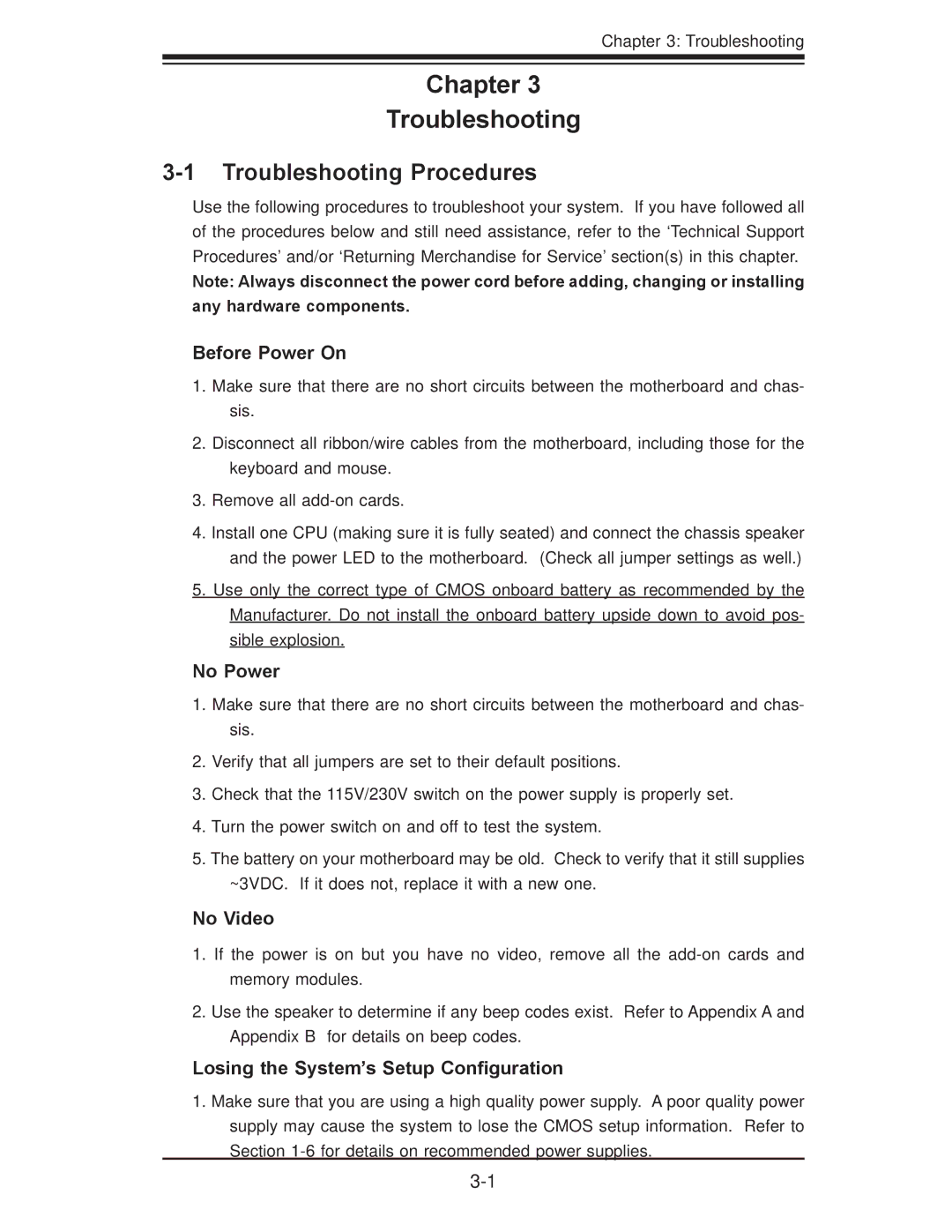
Chapter 3: Troubleshooting
Chapter 3
Troubleshooting
3-1 Troubleshooting Procedures
Use the following procedures to troubleshoot your system. If you have followed all of the procedures below and still need assistance, refer to the ‘Technical Support Procedures’ and/or ‘Returning Merchandise for Service’ section(s) in this chapter.
Note: Always disconnect the power cord before adding, changing or installing any hardware components.
Before Power On
1.Make sure that there are no short circuits between the motherboard and chas- sis.
2.Disconnect all ribbon/wire cables from the motherboard, including those for the keyboard and mouse.
3.Remove all
4.Install one CPU (making sure it is fully seated) and connect the chassis speaker and the power LED to the motherboard. (Check all jumper settings as well.)
5.Use only the correct type of CMOS onboard battery as recommended by the Manufacturer. Do not install the onboard battery upside down to avoid pos- sible explosion.
No Power
1.Make sure that there are no short circuits between the motherboard and chas- sis.
2.Verify that all jumpers are set to their default positions.
3.Check that the 115V/230V switch on the power supply is properly set.
4.Turn the power switch on and off to test the system.
5.The battery on your motherboard may be old. Check to verify that it still supplies ~3VDC. If it does not, replace it with a new one.
No Video
1.If the power is on but you have no video, remove all the
2.Use the speaker to determine if any beep codes exist. Refer to Appendix A and Appendix B for details on beep codes.
Losing the System’s Setup Configuration
1.Make sure that you are using a high quality power supply. A poor quality power supply may cause the system to lose the CMOS setup information. Refer to Section
